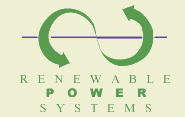Environmental Benefits of Biogas from Anaerobic Digestion
AD is now accepted as the priority treatment route for degradable wastes and has taken its place in the waste hierarchy ahead of other processes available, including in vessel composting (IVC).
The 2007 Waste Strategy for England has recognised this and places emphasis on AD as the processing method of choice for degradable wastes. This is supported by research on the energy impact of the waste stream that concludes that :
“…some materials and management routes show significant potential for greenhouse gas emission and fossil energy demand savings. Although there are a number of uncertainties (see below), the largest potential, over and above current recovery efforts, is with regard to:
- energy recovery via anaerobic digestion of agricultural manures/slurries;
- energy recovery via combustion of waste wood;
- recovery of both resources (through recycling) and energy (through combustion) from waste paper and card; and
- recycling of non-ferrous metals.
The energy benefits estimated for these materials and management routes equate to a combined saving in the region of 88 to 202 PJ-equivalents per year over the period assessed. This is equivalent to approximately 1-3% of UK energy consumption in 2003.
Discounting the influence of relative material arisings, on a tonne-for-tonne basis the recycling of textiles and plastics and energy recovery via anaerobic digestion of kitchen and green wastes and combustion of crop and other organic wastes also show significant potential for benefit”.
Some Environmental Comparisons between AD and IVC
| AD | IVC | |
Energy Balance |
A properly designed and operated AD plant can achieve an excellent energy balance, even taking into account the energy used in transport of the plant feedstock. Even if the plant were digesting energy crops, over ten times more energy would be available as electricity than is used in growing and harvesting the crop. If a market can be found for the heat produced, this energy balance can increase further. As an example, a 15,000 tonne per year AD plant is likely to export 4,900 MWh of renewable electricity per annum to the grid . |
The operation of an IVC facility required the use of energy for operational plant, lighting and vehicles. An IVC plant will typically consume 9 kWh of electricity and 3 litres of diesel fuel per tonne of throughput. A 15,000 tonne per year IVC plant may consume 135 MWh of electricity per annum. |
| Reducing Greenhouse Gases | Even though the combustion of biogas from an AD plant emits CO2, this is a less powerful greenhouse gas than methane, and the electricity and heat generated displaces the need to consume fossil resources. | The aerobic process in IVC causes the conversion of organic material to carbon dioxide (which is then emitted to atmosphere) and organic carbon. Methane should not be emitted from well run facilities. |
| Recycling nutrients, building soil structure | The nutrients in the feedstock of a AD plant which might otherwise be buried in landfill sites or burnt can be safely recycled to land, thereby reducing dependence on chemical and synthetic fertilisers (which are often derived from fossil fuels). The fibre in the final product can help build soil structure. | IVC can also produce a product that is of suitable quality for return to land. |
| Reducing land and water pollution | The poor management of slurries and food processing residues can cause land and water pollution. The implementation of an AD scheme can create an integrated management system that can reduce the chance of such incidents by providing a framework by which benefit can be derived. | IVC is not suitable for low dry matter materials, slurries and liquids. |
| Reducing odour | AD can play an important part in reducing odour problems with slurries and food processing residues due to the closed nature of the process. | The material handling requirements of IVC plant need to be carefully managed in envelope buildings to minimise odour. |
